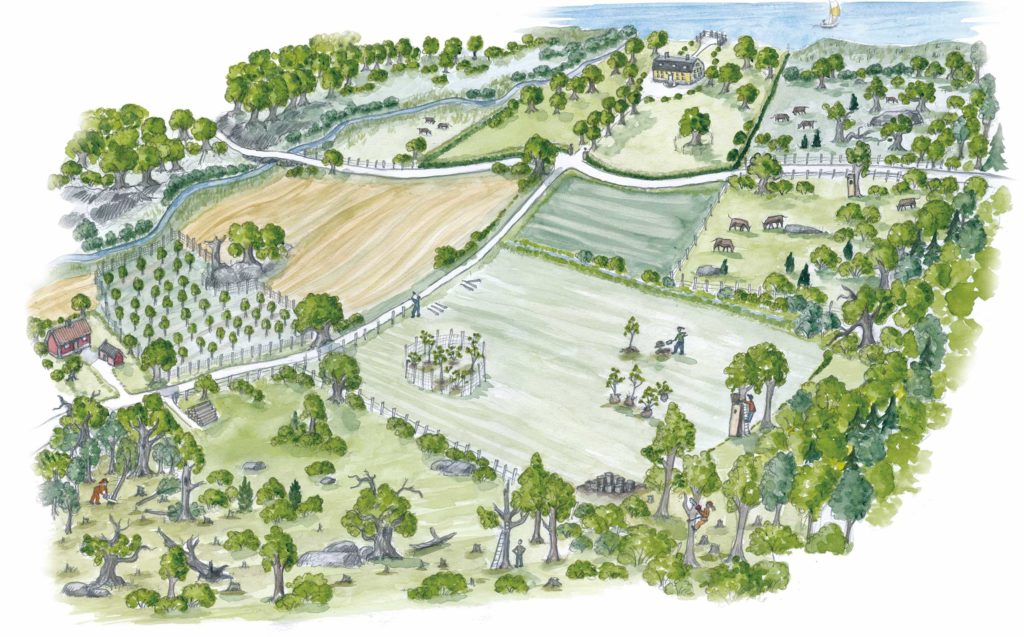Crown right removed
In 1830 the time had come: the restrictions on the oaks could be removed for a small fee when the oaks were inspected, prior to felling. The crown established a large plantation on the island of Visingsö; today it is a well-managed oak plantation, with trees approaching 200 years of age. Many hundreds of thousands, if not millions, of old oaks were felled, especially in southeastern Sweden, becoming firewood and fenceposts. Large populations of species that were common at the time were eliminated. Species associated with old oaks began to die out, and this trend continues. In the Halltorp Nature Reserve on the island of Öland, with the most red-listed woodland species in the country, the area of Halltorp-Ekerum now has just one per cent of the old oaks it formerly had.
| NO. OF OAKS, 1790 | NO. OF OAKS, 1825 | REDUCTION (%) | |
| Blekinge county | 10 269 | 4 480 | 56 % |
| Kalmar county | 65 298 | 5 674 | 91 % |
| Östergötlands county | 38 922 | 7 038 | 82 % |
The massive reduction in the number of suitable oaks also means that there were hundreds of thousands of decrepit, decayed old oaks in the more fertile areas close to the farms of southern Sweden. Thus, the landscape was incredibly rich in biodiversity, with all these old, decaying, hollow oaks in well-managed meadows.
Oak landscapes which are connected together, with large numbers of really old oaks can today be found mainly on land which in the nineteenth century was owned by nobility, and where felling oaks was not prohibited. A large portion of the land that was suitable for oak woodland has become fields, been ditched, or been planted with spruce. The oak landscape on Gotland was eradicated completely because there was no land owned by nobility there. The number of young oaks in woodland has fallen since the 1980s due to increasingly dense woodlands and a high grazing pressure from wild animals.
Thanks to the large national inventories of harvestable oaks that took place in the eighteenth and nineteenth centuries, we know that today’s oak landscapes and oak-rich woodlands constitute only a very small proportion of the number of oaks that existed two centuries ago.
Today’s landscape and situation
Since the early 1950s, the total volume of oaks has increased, probably because the number of large oaks has increased. However the situation looks worse for young oaks, which have fallen in number since the 1980s. If we make a concerted effort to restore overgrown oak habitats, and favour oak in woodlandry production, we still have a chance to save our valuable oak landscapes, and all of their species.

